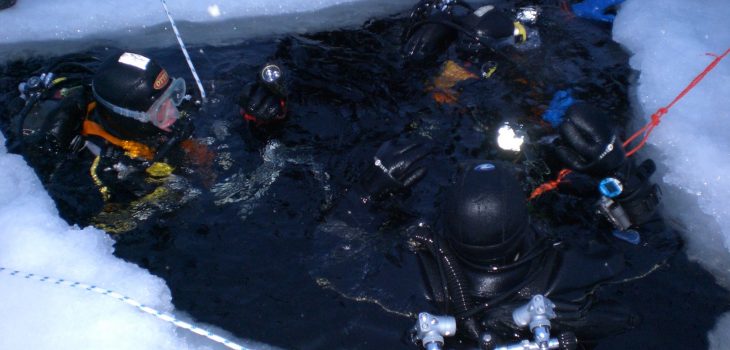 Norway
Norway
24th February 2008 – Kirkenes
During February of this year members of the Lowestoft Sub Aqua Club joined up with seven other divers from different parts of the country and from different training organisations to dive the frozen waters of arctic Norway. The group was based at Kirenes in Northern Norway well inside the Arctic Circle. Kirkenes is situated at the northern most tip of Norway in the Barents Sea, it is only a few kilometres from the Russian border and only 145 Km from Murmansk.
The purpose of the trip was to be trained in ice diving techniques and once the ice diving qualification was gained to then dive some of the sites in the fjords. The course was run by IANTD (International association of Nitrox and Technical divers). Once qualified we were to become part of a very small group to hold this qualification worldwide.
The first day saw us arrive at the centre we were to be based at for the week, and we got down to it straight away. As the ice on the fjord was moving and not thick enough we had to make a journey to an inland lake which was a few kilometres away. We loaded all of the equipment on Skidoos and sledges and made off to the frozen lake. Once a suitable depth was found we set about marking out the snow on the lake in 30mtr diameter circle to allow light to penetrate to the water below. An equilateral triangle, with 2mtr sides, had to be cut into the ice. This was no easy task as the ice was 500mm thick, or for the older ones nearly 2 ft, these came out as solid lumps which took three people to shift, and it is real physical work in a drysuit.
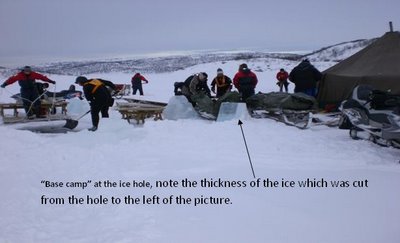
We secured the hole to return the next day to make our first dive under the ice after we made a checkout dive in the fjord to make sure all equipment functioned OK in the low temperatures. The average daytime air temperature was around minus 25degrees C, dropping to aoround minus 30 at night. The water temperature at the ice hole was minus 4 which soon warmed up to around 2 degrees under the ice.
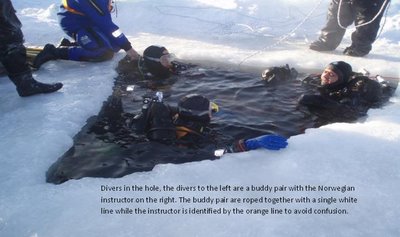
All of the divers in the group were of a good experience level and worked well together as a team. We split into buddy pairs with two divers in the water, two divers fully kitted and ready as standby divers with the next pair doing the rope tender role. All other divers assisted with kitting up and then rotated after the first pair were out of the water.
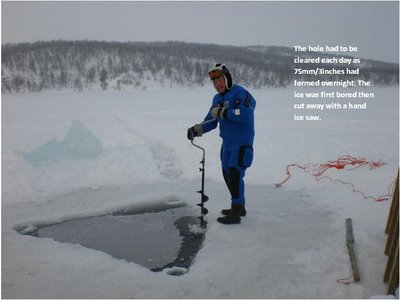
The first dive was a familiarisation dive with part of that familiarisation being to put your face into the water with no mask to acclimatise to the low temperatures. Once under the ice the feeling is different to that of normal diving, in as much as it is quieter and calmer, it is also very strange coming up against the underside of the ice, tapping it and realising that it is as solid as rock, with only one way out.
One of the strange things about diving in conditions as extreme as this is that to a certain extent it flies in the face of “standard “ scuba training in as much as you cannot fully check all of your equipment before you enter the water in case it freeflows when you enter, it is also frozen solid and only thaws once in the water. This can be a little unnerving, hence the need for rope tenders and a safety harness.
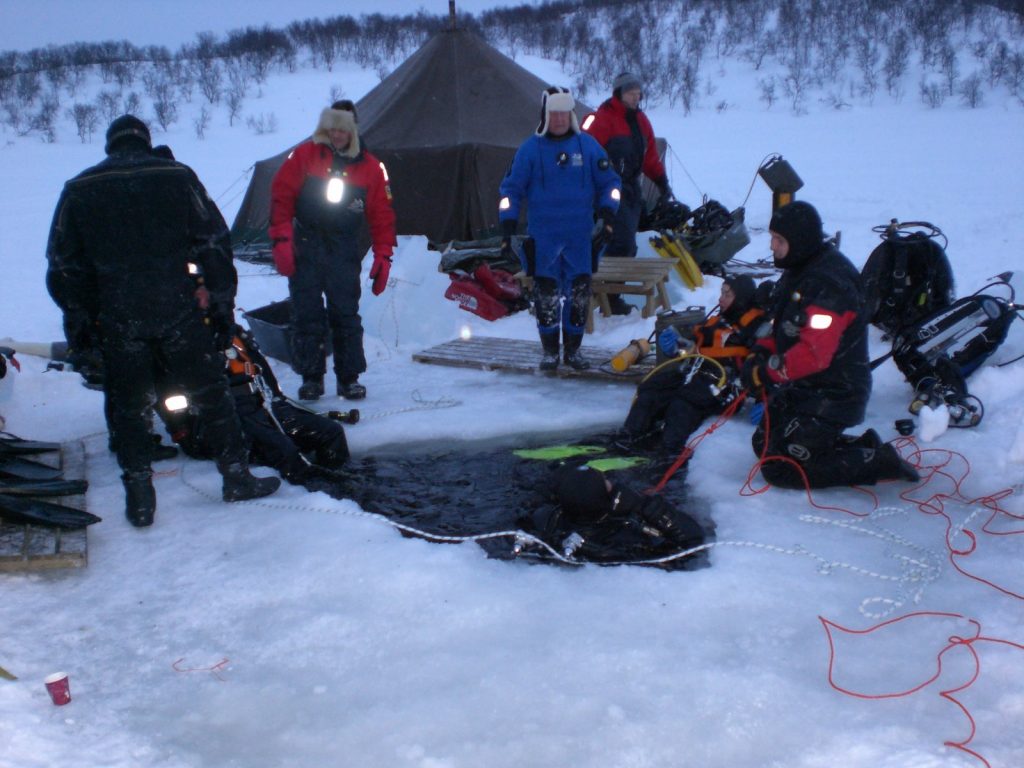
The attached pictures give some idea what it is like. For more information on this please contact anyone at the Lowestoft Sub Aqua Club, or alternatively if you are interested in learning to dive contact any club member or just simply come along to the pool on a Tuesday night.